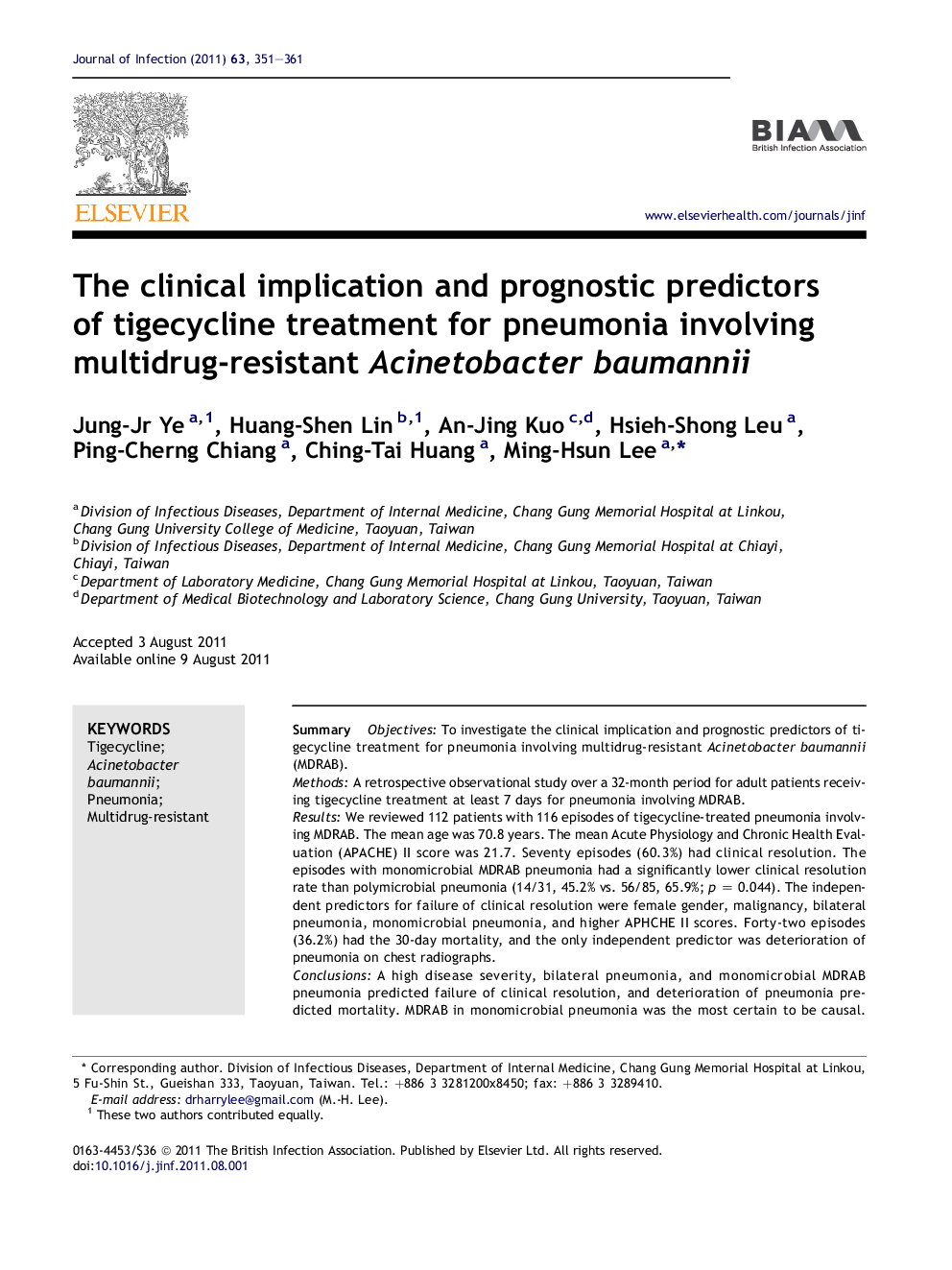| Article ID | Journal | Published Year | Pages | File Type |
|---|---|---|---|---|
| 3375331 | Journal of Infection | 2011 | 11 Pages |
SummaryObjectivesTo investigate the clinical implication and prognostic predictors of tigecycline treatment for pneumonia involving multidrug-resistant Acinetobacter baumannii (MDRAB).MethodsA retrospective observational study over a 32-month period for adult patients receiving tigecycline treatment at least 7 days for pneumonia involving MDRAB.ResultsWe reviewed 112 patients with 116 episodes of tigecycline-treated pneumonia involving MDRAB. The mean age was 70.8 years. The mean Acute Physiology and Chronic Health Evaluation (APACHE) II score was 21.7. Seventy episodes (60.3%) had clinical resolution. The episodes with monomicrobial MDRAB pneumonia had a significantly lower clinical resolution rate than polymicrobial pneumonia (14/31, 45.2% vs. 56/85, 65.9%; p = 0.044). The independent predictors for failure of clinical resolution were female gender, malignancy, bilateral pneumonia, monomicrobial pneumonia, and higher APHCHE II scores. Forty-two episodes (36.2%) had the 30-day mortality, and the only independent predictor was deterioration of pneumonia on chest radiographs.ConclusionsA high disease severity, bilateral pneumonia, and monomicrobial MDRAB pneumonia predicted failure of clinical resolution, and deterioration of pneumonia predicted mortality. MDRAB in monomicrobial pneumonia was the most certain to be causal. The clinical resolution rate from such pneumonia might reflect the ultimate efficacy of tigecycline in treating MDRAB pneumonia and the overall efficacy might be overestimated.
